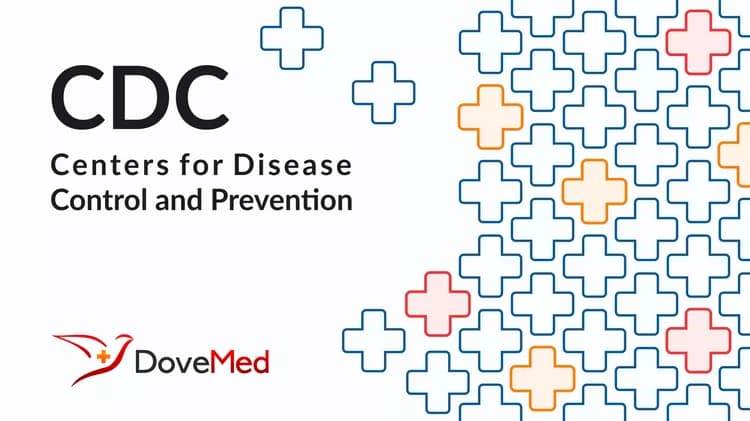
More U.S. Adults Report Being Obese
More U.S. Adults Report Being Obese
No State Has Met 2010 National Goal of 15 Percent Adult Obesity Prevalence
The number of states with an obesity prevalence of 30 percent or more has tripled in two years to nine states in 2009, according to a CDC Vital Signs report. In 2000, no state had an obesity prevalence of 30 percent or more. The report, "State-Specific Obesity Prevalence Among Adults – United States, 2009," also finds no state met the nation's Healthy People 2010 goal to lower obesity prevalence to 15 percent.
The data show a 1.1 percentage point increase—an additional 2.4 million people—in the self-reported prevalence of obesity between 2007 and 2009 among adults aged 18 and over. The report also notes the medical costs associated with obesity are high. In 2008 dollars, medical costs associated with obesity were estimated at $147 billion. People who are obese had medical costs that were $1,429 higher than those of normal weight, the report said.
"Obesity continues to be a major public health problem," said CDC Director Thomas Frieden, M.D., M.P.H. "We need intensive, comprehensive and ongoing efforts to address obesity. If we don't more people will get sick and die from obesity-related conditions such as heart disease, stroke, type 2 diabetes and certain types of cancer, some of the leading causes of death."
The August Vital Signs report is based on new data from the Behavioral Risk Factor Surveillance System (BRFSS). BRFSS contains state-level public health data and provides a way for states to monitor progress toward Healthy People goals. To assess obesity prevalence, approximately 400,000 phone survey respondents were asked to provide their height and weight, which was used to calculate their body mass index (BMI). An adult is considered obese if he or she has a BMI of 30 or above. For example, a 5-foot-4 woman who weighs 174 pounds or more, or a 5-foot-10 man who weighs 209 pounds or more has a BMI of 30, and so is considered obese.
The BRFSS obesity data are underestimates of true obesity prevalence. Research has found that both men and women often say they are taller than they actually are and women often say they weigh less than they do in telephone surveys. As a result, according to William Dietz, M.D., Ph.D., director of CDC's Division of Nutrition, Physical Activity and Obesity, the overall BRFSS obesity prevalence estimate of 26.7 percent is 7.2 percentage points lower than the national 2007-2008 estimate of 33.9 percent (nearly 73 million people) from the National Health and Nutrition Examination Survey, for which individuals' height and weight were measured rather than self-reported.
The BRFSS data highlight how obesity affects some populations more than others. The highest prevalence was found among non-Hispanic blacks overall, whose rate was 36.8 percent, and non-Hispanic black women, whose rate was 41.9 percent. The rate for Hispanics was 30.7 percent. The rate among all non-high school graduates was 32.9 percent. Obesity prevalence was also higher in some regions than others. The South had an obesity prevalence of 28.4 percent while the Midwest had a prevalence of 28.2 percent.
"Obesity is a complex problem that requires both personal and community action," said Dr. Dietz. "People in all communities should be able to make healthy choices, but in order to make those choices there must be healthy choices to make. We need to change our communities into places where healthy eating and active living are the easiest path."
The federal government is intensifying its efforts to reduce and prevent obesity through new initiatives such as the First Lady Michelle Obama's Let's Move! campaign to address childhood obesity and the Communities Putting Prevention to Work program. The CPPW program provides guidance and funding to states and communities to change state and local environments and policies related to diet and physical activity.
For more information on obesity prevalence, including an animated map, visit www.cdc.gov/vitalsigns or www.cdc.gov/obesity.
About Vital Signs
CDC Vital Signs is a new report that will appear on the first Tuesday of the month as part of the CDC journal Morbidity and Mortality Weekly Report (MMWR). Vital Signs is designed to provide the latest data and information on key health indicators – cancer prevention, obesity, tobacco use, alcohol use, access to health care, HIV/AIDS, motor vehicle passenger safety, health care-association infections, cardiovascular health, teen pregnancy, infant mortality, asthma and food safety.
###
U.S. DEPARTMENT OF HEALTH AND HUMAN SERVICES
Related Articles
Test Your Knowledge
Asked by users
Related Centers
Related Specialties
Related Physicians
Related Procedures
Related Resources
Join DoveHubs
and connect with fellow professionals

0 Comments
Please log in to post a comment.